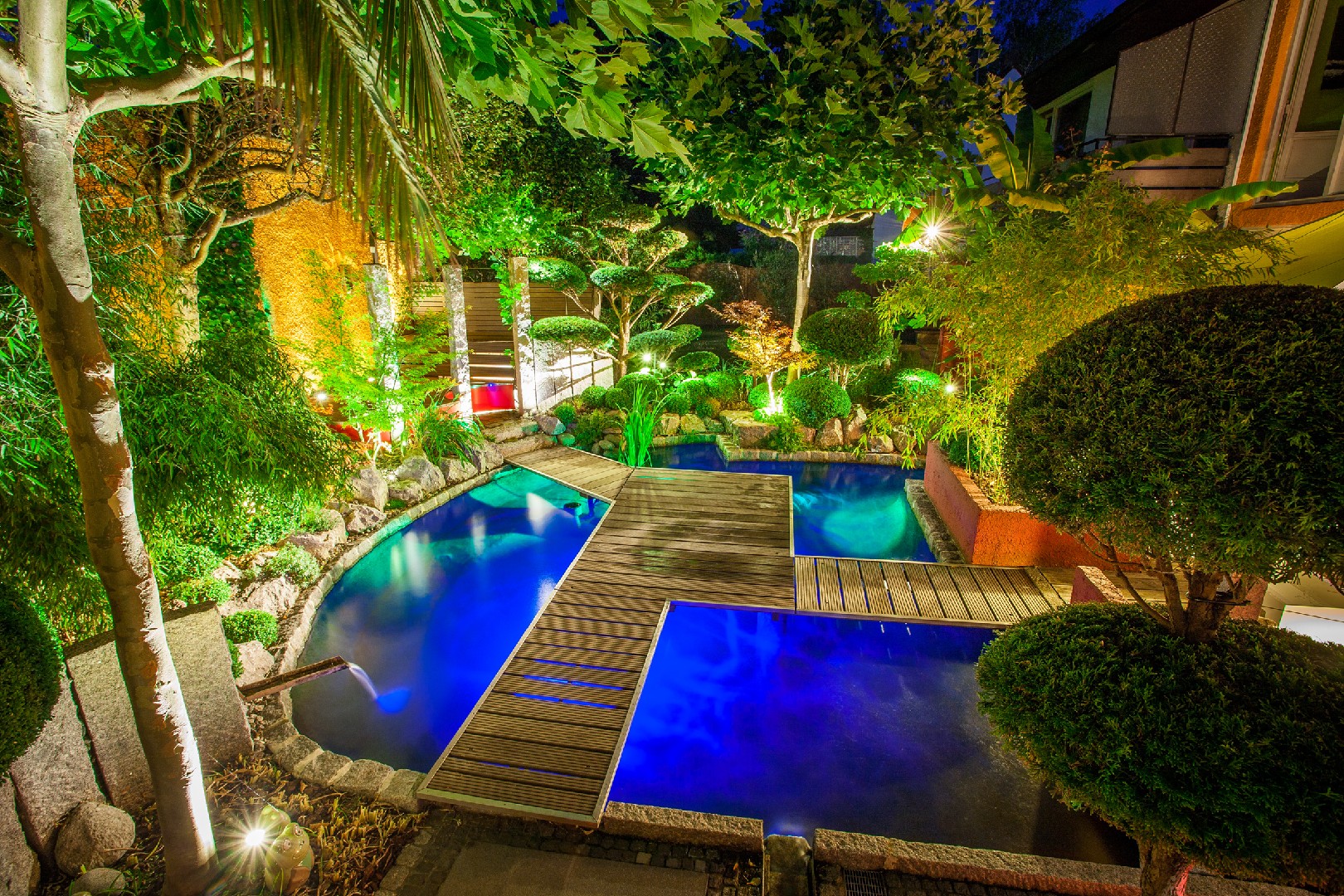![Rectangle]()
The Spectrum of Delight: Diverse Lighting Techniques
In the realm of architectural garden lighting, there is a vast spectrum of delightful techniques that can transform any outdoor space into a modern paradise. It's not just about illuminating the darkness; it's about crafting an atmosphere that evokes emotions and enhances the beauty of the surrounding architecture. Let's explore some of the most popular modern lighting techniques that can help you achieve this.
One technique that has gained popularity in recent years is the use of soft lighting. Soft lighting creates a subtle, comforting glow that adds warmth and intimacy to the garden. This technique is often achieved through the use of diffused light sources, such as lanterns or string lights covered with decorative shades. By scattering the light and minimizing harsh shadows, soft lighting creates an enchanting ambiance that invites relaxation and serenity.
On the other end of the spectrum, hard lighting can be employed to create dramatic, eye-catching effects. Hard lighting involves using focused, intense light beams to highlight specific elements of the garden. This technique is particularly effective for showcasing architectural features, such as statues, columns, or unique landscaping elements. By contrasting bright light with deep shadows, hard lighting adds a sense of depth and intrigue to the garden, creating a visually striking experience.
Another technique that architects and designers often use is indirect lighting. Indirect lighting involves bouncing light off surfaces to create a soft, diffused illumination that doesn't cast sharp shadows. This technique is ideal for illuminating large outdoor areas, such as walkways or patios, as it provides a gentle, even light that is easy on the eyes. Indirect lighting can be achieved through the use of uplights, downlights, or wall washers strategically placed around the garden, casting a warm glow on the surrounding elements.
In addition to playing with different lighting techniques, modern garden lighting also offers a wide range of options when it comes to colors and intensity. For those seeking a vibrant, energetic atmosphere, colored lights can be used to add a pop of excitement to the garden. By carefully selecting hues that complement the surrounding foliage and architecture, you can create a dynamic, ever-changing landscape that surprises and delights visitors.
When it comes to intensity, dimmable lights allow for flexibility in setting the mood. Whether you're hosting a lively outdoor gathering or enjoying a quiet evening under the stars, the ability to adjust the brightness of your garden lights can make all the difference. Installing a dimming system enables you to seamlessly transition from bright and vibrant to soft and romantic, ensuring that every moment in your garden is perfectly illuminated.
By mastering the diverse range of lighting techniques available to you, you can transform your architectural garden into a captivating work of art. Remember to experiment, play with different techniques, and let your creativity guide you. With the right combination of soft and hard lighting, indirect illumination, and a splash of color, you can create a modern outdoor space that not only impresses but also brings joy and delight to everyone who experiences it.





